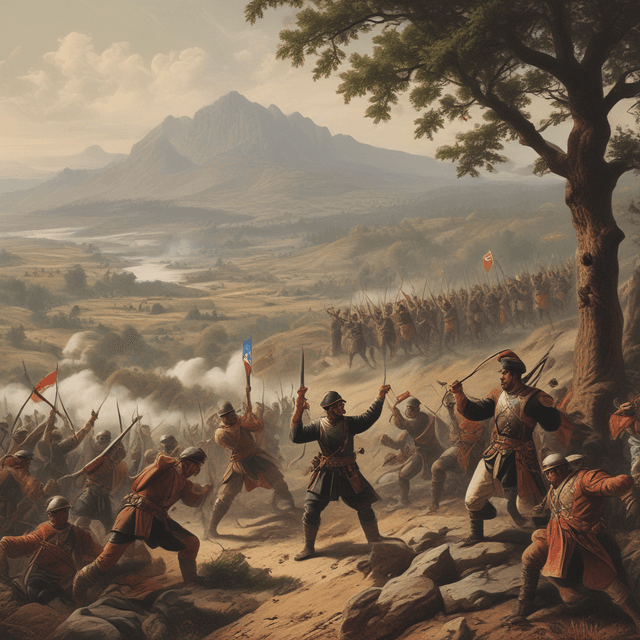
| Type | Armed rebellion |
| Event | Serbian Uprising of 1815 |
| Causes | Inspired by the earlier Serbian Revolution of 1804, seeking to overthrow Ottoman authority and establish an independent Serbian state |
| Outcome | Failure of the uprising, Ottoman reassertion of control over the Balkans |
| Consequences | Delayed the eventual dissolution of the Ottoman Empire in the Balkans, with the region remaining under Ottoman influence well into the late 19th century |
| Participants | Serbia against Ottoman Empire |
The Serbian Uprising of 1815 was an armed rebellion against the rule of the Ottoman Empire in the Balkans region. Led by Serbian nationalist leader Miloš Obrenović, the uprising sought to overthrow Ottoman authority and establish an independent Kingdom of Serbia. While the rebels achieved some early victories, the uprising was ultimately suppressed by the superior Ottoman military forces, dealing a major blow to Serbian aspirations for self-governance.
Following the initial Serbian Revolution of 1804, which had briefly overthrown Ottoman rule, Serbia had been granted a limited autonomy as a vassal state of the Ottoman Empire. However, Serbian resentment over continued Ottoman political and economic domination remained high. Influenced by the nationalism sweeping through the region, many Serbs sought to fully break away from the Ottoman yoke.
In 1815, tensions finally boiled over into open conflict. Seizing upon the Ottoman Empire's preoccupation with conflicts elsewhere, Serbian rebel forces under Miloš Obrenović launched a new uprising, quickly gaining control of much of the Serbian territory. Obrenović proclaimed the establishment of an independent Serbian state, with himself as its first hereditary prince.
The Ottoman government in Constantinople, alarmed by the threat of losing yet another Balkan province, marshaled its military forces to brutally crush the Serbian rebellion. Backed by reinforcements from Bosnia, Albania, and other Ottoman strongholds, the Sultan's army swept into Serbia, engaging the rebels in a series of bloody battles.
Despite some early guerilla victories, the Serbs were ultimately outmatched by the superior Ottoman military equipment, organization, and numbers. By 1816, Obrenović's forces had been decisively defeated, and Serbian control over much of the territory had been relinquished to the Ottoman authorities.
The failure of the 1815 Serbian Uprising was a major setback for the Serbian nationalist movement. Rather than gaining independence, Serbia was forced to accept continued vassalage and political domination by the Ottoman Empire. This allowed the Ottomans to solidify their grip over the entire Balkans region for decades to come.
In the wake of the rebellion's suppression, the Ottoman governor in Serbia enacted harsh measures to prevent future unrest. This included dismantling local Serbian self-governance, stationing large Ottoman garrisons across the territory, and severely restricting the rights and freedoms of the Serbian populace.
The consequences of the failed 1815 uprising would continue to reverberate through the 19th century. Serbian nationalist sentiment remained simmering, occasionally erupting into new bouts of revolt and conflict with the Ottoman overlords. However, the 1815 failure forestalled the creation of an independent Serbian state until much later in the century, prolonging the Ottoman Empire's hold over the Balkans.
Ultimately, the Serbian Uprising of 1815 represented a pivotal missed opportunity in the history of Serbian self-determination. Its defeat cemented the continued Ottoman domination of the region, delaying the eventual dissolution of the Ottoman Empire in Southeastern Europe by several decades.